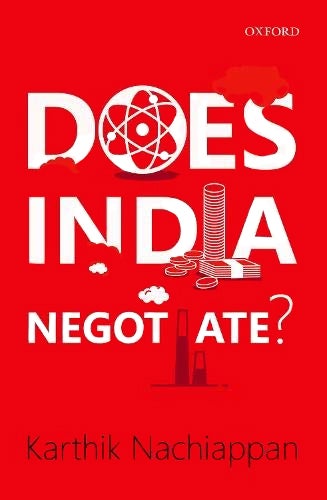
| Title: | Does India Negotiate ? |
| Author/s: | Karthik Nachiappan |
| Abstract: | As a key state in the international system, India's positions and contributions on issues like climate change, health pandemics, humanitarian crises and nuclear disarmament significantly affect how these issues are addressed. Scholarly work mapping India's multilateral behaviour has extended from covering the United Nations to a wide range of fora where India is seeking to shape issues that affect its security and development. Yet, the literature on Indian multilateralism lags, focusing disproportionately on India's ostensibly obstructionist tendencies without adequately contextualising why India behaves this way. There has been no serious exploration of how India concretely negotiates multilateral issues. In this book, Karthik Nachiappan investigates how India negotiates international rules focusing on four agreements, covering issues like climate change, nuclear disarmament, tobacco control and international trade. By unpacking these negotiations, he shows that India's multilateral persona is more nuanced than understood. When interests align, Indian negotiators are willing to constructively shape and ratify international agreements, conceding when necessary to cut deals and make compromises. |
| Date: | 11 October 2019 |
| More From: |
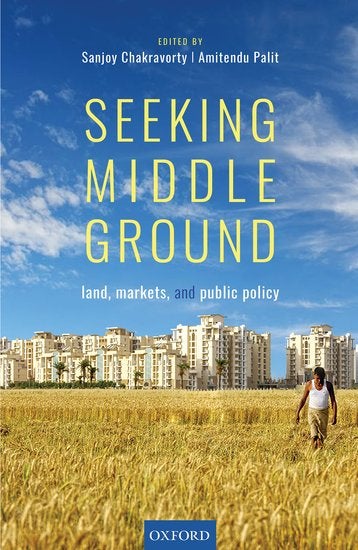
| Title: | Seeking Middle Ground : Land, Markets, and Public Policy |
| Author/s: | Sanjoy Chakravorty and Amitendu Palit |
| Abstract: | Land is a subject of great conflict and debate in India. Over the past decade, the debate has focused on land acquisition, which some have called India's biggest problem. Land and the issues related to its acquisition have heavily influenced electoral verdicts and political fortunes in various parts of India. A new law for acquisition was created by the left-of-center Congress-led UPA government in 2013, which was immediately sought to be amended (unsuccessfully) in 2014 by the newly elected right-wing BJP-led NDA government. These differing visions on acquisition have often been simplified into opposing camps: people-friendly vs. business-friendly.
At the core of the debate are serious issues of justice and history intertwined with politics and economics. These debates over land are already prominent in contemporary India and are expected to become even more so in the coming decade given the anxieties over rural distress and the problem of livelihoods. Social, economic, and political turmoil over land will become more visible as India struggles to address the serious challenges of satisfying the aspirations of a burgeoning young population with growing lack of work. As land-based incomes stagnate or dwindle for rural communities and alternative earning options remain vague and limited, while changing land use from agriculture to more productive alternatives remains fraught with conflict, popular politics and public policies in India will have to stay engaged with the debate on land at their core. |
| Date: | 10 October 2019 |
| More From: |
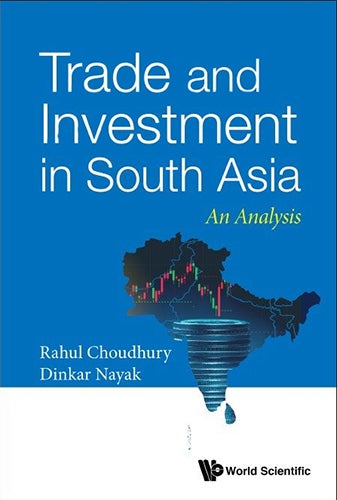
| Title: | Trade and Investment in South Asia: An Analysis |
| Author/s: | Rahul Nath Choudhury and Dinkar Nayak |
| Abstract: | Foreign Direct Investment (FDI) flows started gaining traction in South Asia from the late 20th century onwards, when nations from the South Asian Association for Regional Cooperation (SAARC) began moving away from highly controlled regimes and adopting liberal and open economic policies.
In the context of surplus labour and capital scarcity faced by South Asian countries such as India, Pakistan, Bangladesh and Sri Lanka, to varying degrees, the economic reform process has provided an opportunity to actively promote inward FDI flows, with the goal of providing the much-needed capital for the growth of this region. Several policy initiatives were undertaken to attract FDI and incentives were announced to fascinate investors, resulting in the inflow of FDI across the region. This book examines FDI inflows in SAARC nations in the light of regional policy changes in the 21st century. It investigates the relationship between trade and FDI in the region, and also provides insights into the ease of doing business in the SAARC region. |
| Date: | 1 October 2019 |
| More From: |
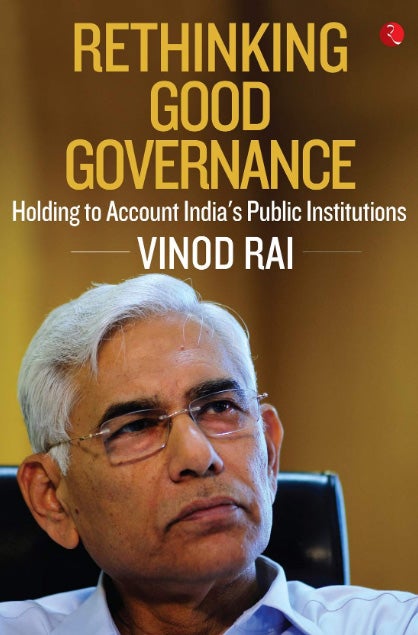
| Title: | Rethinking Good Governance: Holding to Account India’s Public Institutions |
| Author/s: | Vinod Rai |
| Abstract: | Public institutions support good governance, which, in turn, promotes sustainable economic development and thereby nurtures the welfare of the people. The vital bond between a people and its government is that of trust and these public institutions help maintain that trust. They serve as the pillars supporting the foundation of a robust and vibrant democracy. In Rethinking good governance, Vinod Rai highlights the strength of each of these pillars and analyses the circumstances that may have led to their weakening, resulting in the foundations of our democratic fabric being somewhat shaken. From numerous occasions when parliamentarians failed to adhere to the decorum expected of lawmakers in the house, the serious deficit of impartiality and integrity within the central Bureau of investigation, to the issue of governance that has plagued the Board of control for cricket in India (BCCI) and the imbroglio around the perceived lack of cohesion between the government and the Reserve Bank of India, Rai reveals how each of these instances led to a gradual decline of the independence and autonomy of these institutions over the decade. |
| Date: | 1 September 2019 |
| More From: |
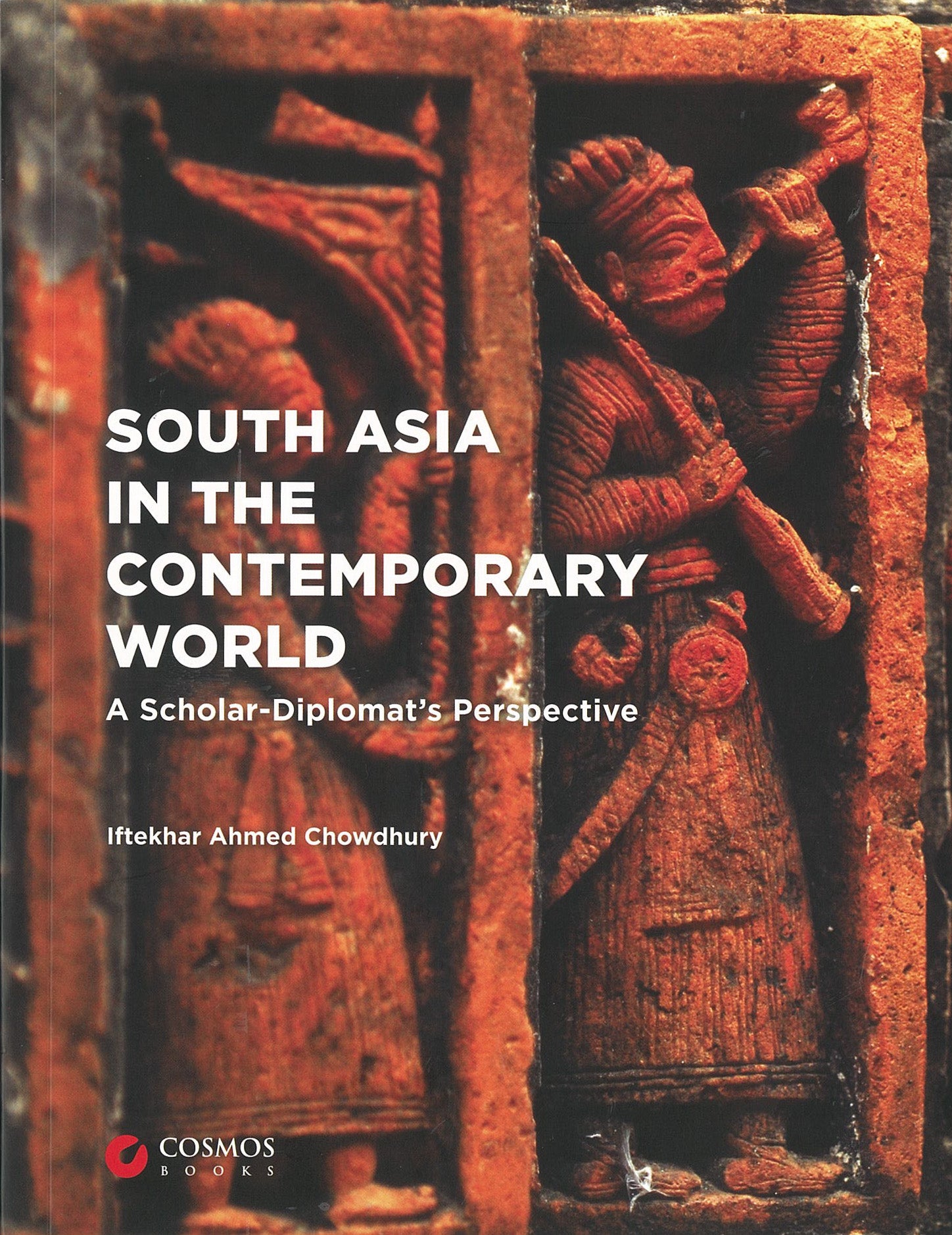
| Title: | South Asia in the Contemporary World: A Scholar-Diplomat’s Perspective |
| Author/s: | Iftekhar Ahmed Chowdhury |
| Abstract: | The renowned Bangladeshi diplomat and scholar, Dr Iftekhar Ahmed Chowdhury was the consummate policy insider and practitioner. Now, from his perch at Singapore’s famed Institute for South Asian Studies, he has been sharing his vast knowledge and analytical insights with the world in a series of cogent articles and commentaries, happily brought together in this timely collection. This book is a must-read for students, academics, policy makers, and practitioners, and all those who seek deeper understanding of this vitally important part of the world. |
| Date: | 1 August 2019 |
| More From: |
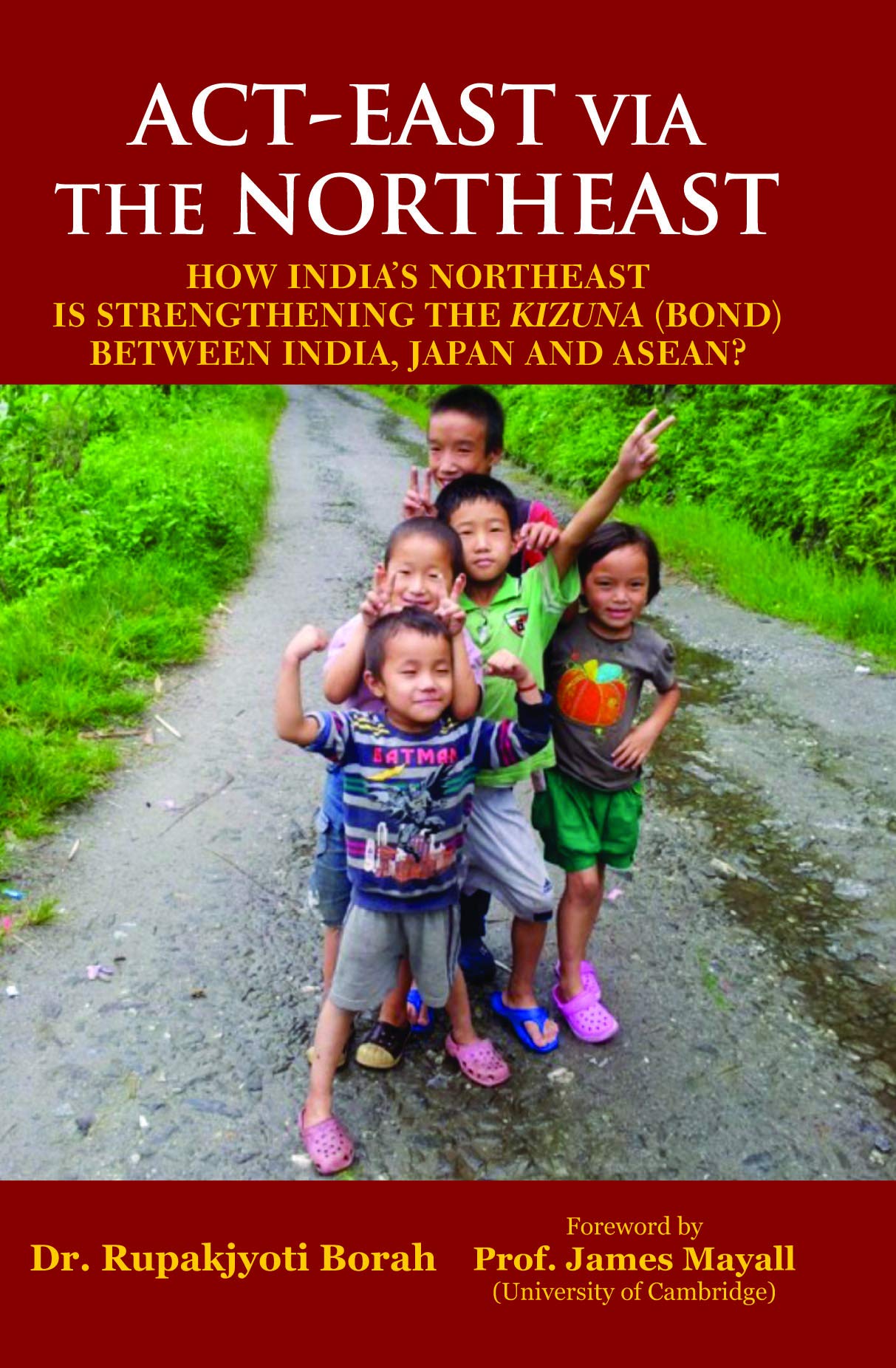
| Title: | Act East via the Northeast: How India’s Northeast is Strengthening the Kizuna (Bond) Between India, Japan and ASEAN ? |
| Author/s: | Rupakjyoti Borah |
| Abstract: | India's relations with both Japan and ASEAN have been growing rapidly as a result of New Delhi's “Act-East Policy”. The Northeast Indian states are beginning to court foreign investment as seen in the maiden Global Investors' Summit in Guwahati, Assam earlier in February last year. In February 2018, the government of Assam inked an agreement with the National Building Construction Corporation (NBCC) to construct a 65-storey Twin Towers, in Guwahati, Assam which is being touted as the hub of India's engagement efforts with the ASEAN countries as a part of its “Act-East Policy”. At the inauguration of India's longest bridge over the Lohit river in Assam (on the third anniversary of his swearing in as the Prime Minister on May 26, 2017), PM Modi noted that “the eastern and north-eastern parts of the country have the greatest potential for economic development, and this bridge is just one element of the Union Government's vision in this regard.” The development of Northeast India will also be in keeping with the present government's strategy of “Neighbourhood First” as Bhutan and Nepal were the first two countries, which PM Modi visited after taking over as the PM. In addition, PM Modi had invited the Heads of State of all the SAARC countries to his inauguration. However, although the total trade between India and ASEAN stood at US$58.4 billion in 2016, Northeast India only accounts for a miniscule portion of it in spite of this geographical contiguity. On the other hand, in another worrying development-India made up only 2.6 per cent of ASEAN's total external trade in 2016. In order to bring up development levels in Northeast India to levels in other parts of the country, cooperation with ASEAN and Japan is sine-qua-non. Only this will ensure that the Northeastern part of India will be able to overcome the tyranny of geography. |
| Date: | 3 July 2019 |
| More From: |
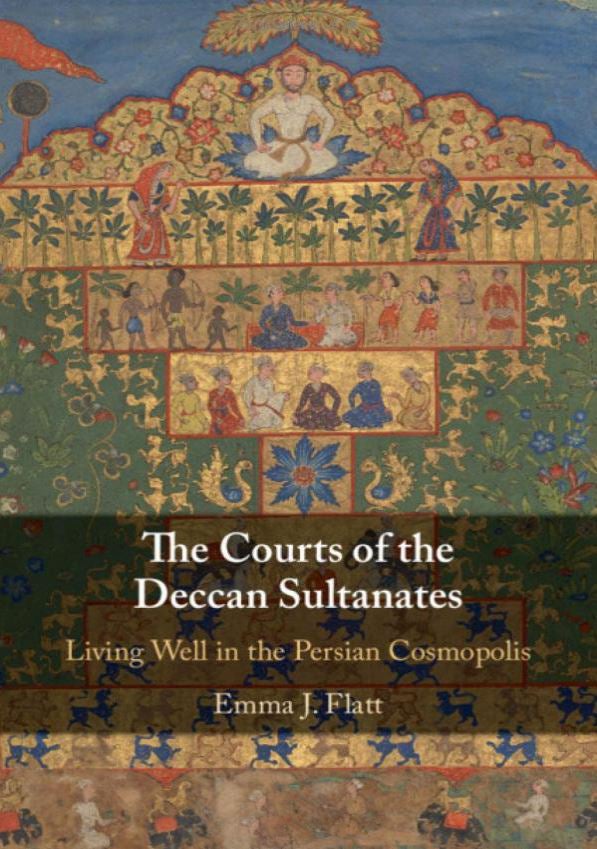
| Title: | The Courts of the Deccan Sultanates: Living Well in the Persian Cosmopolis |
| Author/s: | Emma Jane Flatt |
| Abstract: | In the late fifteenth and sixteenth centuries, courtliness was crucial to the political and cultural life of the Deccan. Divided between six states competing for territory, resources and skills, the medieval and early modern Deccan was a region of striking ethnic, linguistic and religious diversity. People used multifaceted trans-regional networks - mercantile, kinship, friendship and intellectual - to move across the Persian-speaking world and to find employment at the Deccan courts. This movement, Emma J. Flatt argues, was facilitated by the existence of a shared courtly disposition. Engagement in courtly skills such as letter-writing, perfume-making, astrological divination, performing magic, sword-fighting and wrestling thus became a route to both worldly success and ethical refinement. Using a diverse range of treatises, chronicles, poetry and letters, Flatt unpicks the ways this challenged networks of acceptable behaviour and knowledge in the Indo-Islamicate courtly world - and challenges the idea of perpetual hostility between Islam and Hinduism in Indian history. |
| Date: | 1 July 2019 |
| More From: |
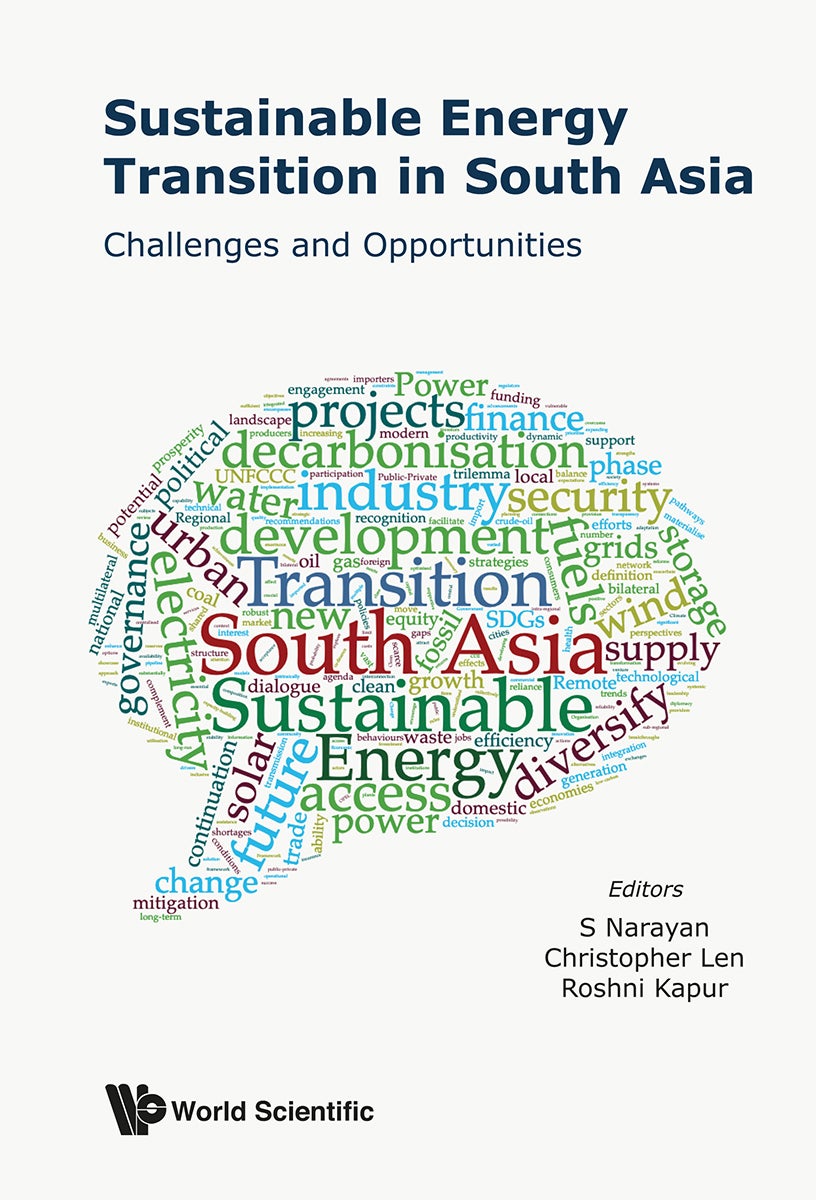
| Title: | Sustainable Energy Transition in South Asia: Challenges and Opportunities |
| Author/s: | S Narayan, Christopher Len and Roshni Kapur |
| Abstract: | With South Asia's growing energy demand, governments in the region are facing the short-term pressures of facilitating energy access, while attempting to formulate long-term sustainable strategies. This book explores how the key economies of South Asia are addressing issues such as the diversification of energy consumption profiles and import sources, investments in renewables, enabling universal energy access, challenges to regional energy cooperation, greenhouse gas emissions and climate change, and the policy changes that can foster bilateral and multilateral action.
As governments seek to ensure access to affordable, reliable, secure, sustainable and modern energy, trends and drivers are emerging and shaping the South Asian energy landscape. The first section of the book examines energy trends at the regional level, while the second section focuses on the internal and external challenges faced by India — the largest energy consumer in the region and the third-largest energy consumer in the world. The diverse perspectives in this volume provide a holistic snapshot of South Asia's ongoing low-carbon energy transition and highlight the importance of the region working collectively to navigate the many obstacles. |
| Date: | 1 July 2019 |
| More From: |
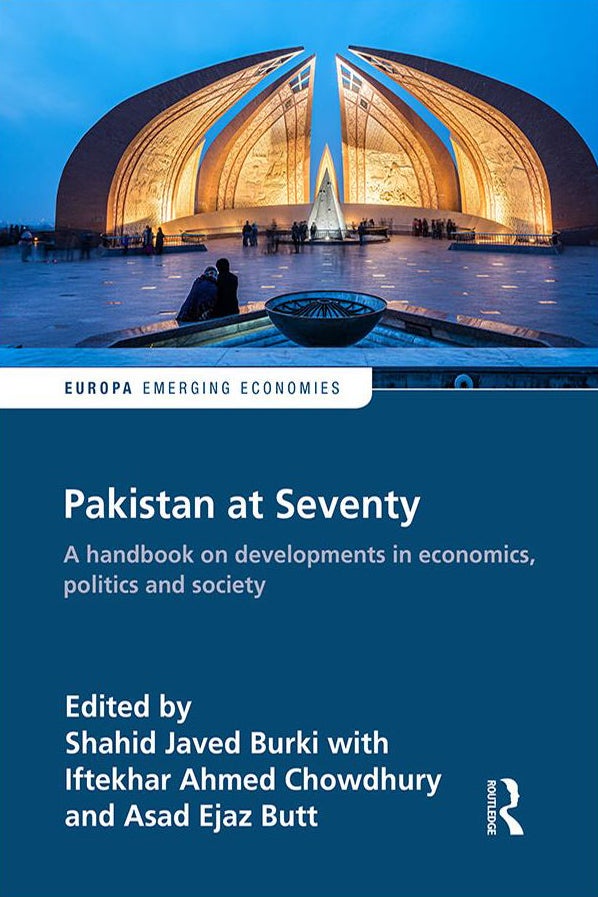
| Title: | Pakistan at Seventy: A Handbook on Developments in Economics, Politics and Society |
| Author/s: | Shahid Javed Burki, Iftekhar Ahmed Chowdhury, Asad Ejaz Butt |
| Abstract: | This handbook examines Pakistan’s 70-year history from a number of different perspectives. When Pakistan was born, it did not have a capital, a functioning government or a central bank. The country lacked a skilled workforce. While the state was in the process of being established, eight million Muslim refugees arrived from India, who had to be absorbed into a population of 24 million people. However, within 15 years, Pakistan was the fastest growing and transforming economy in the developing world, although the political evolution of the country during this period was not equally successful. Pakistan has vast agricultural and human resources, and its location promises trade, investment and other opportunities. Chapters in the volume, written by experts in the field, examine government and politics, economics, foreign policy and environmental issues, as well as social aspects of Pakistan’s development, including the media, technology, gender and education. |
| Date: | 10 June 2019 |
| More From: |

| Title: | Seven Hundred Years: A History of Singapore |
| Author/s: | Kwa Chong Guan, Derek Heng, Peter Borschberg and Tan Tai Yong |
| Abstract: | Assessments of Singapore’s history invariably revolve around Sir Stamford Raffles’ arrival in 1819. Before this date – we’ve been told – “nothing very much appears to have happened in Singapore”. Pre-1819 Singapore was a sleepy, historically insignificant fishing village, little more than the “occasional resort of pirates”. This ambitious book, co-written by four of Singapore’s foremost historians, offers an assertive re-evaluation of that view, firmly situating Singapore’s starting point seven hundred years ago. Drawing on a multi-disciplinary range of archival, textual and cartographical records, as well as the latest archaeological discoveries, the authors cast a singular historical trajectory for Singapore over the past seven centuries, animating its history like never before. Written in a compelling and accessible manner, and richly illustrated with more than 200 artefacts, photographs, maps, art works and ephemera, this volume builds upon the foundations of an earlier book, Singapore: A 700-Year History. Extensively rewritten to incorporate ground-breaking research findings, Seven Hundred Years: A History of Singapore widens the historical lens and offers a vital new perspective on the story of Singapore. |
| Date: | 1 June 2019 |
| More From: |
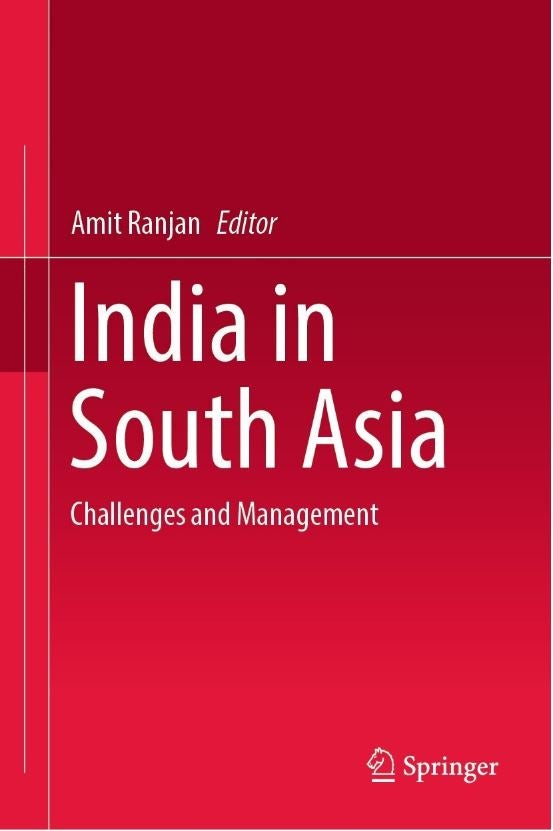
| Title: | India in South Asia: Challenges and Management |
| Author/s: | Amit Ranjan |
| Abstract: | This book discusses the perceptions India has about its South Asian neighbours, and how these neighbours, in turn, perceive India. While analysing these perceptions, contributors, who are eminent researchers in international relations, have linked the past with present. They have also examined the reasons for positive or negative opinions about the other, and actors involved in constructing such opinions.
In 1947, after its independence, India became part of a disturbed South Asia, with countries embroiled in problems like boundary disputes, identity related violence etc. India itself inherited some of those problems and continues to walk the tight rope managing some of them. Traditionally, seventy years of India’s South Asia policy can roughly be categorized into three overlapping phases. The first one, Nehruvian phase, which viewed the region through a prism of an internationalist; the second one, ‘interventionist’ phase, tried to shape neighbours’ policies to suit India’s interests; and the third, accommodative phase, when policy makers attempted to accommodate the demands of the neighbours in India’s policy discourses. These are not ossified categories so one can find that policy adopted during one phase was also used in the other. Keeping the above in mind, the book discusses India’s role in managing and navigating through challenges of the presence of external, regional and international, powers; power rivalries in South Asia; India’s maritime policy and her relationship with extended neighbours; and India being visualized as a soft power by South Asian countries. It will certainly appeal to the academicians, students, journalists, policy makers and all those who are interested in South Asian politics. |
| Date: | 31 May 2019 |
| More From: |
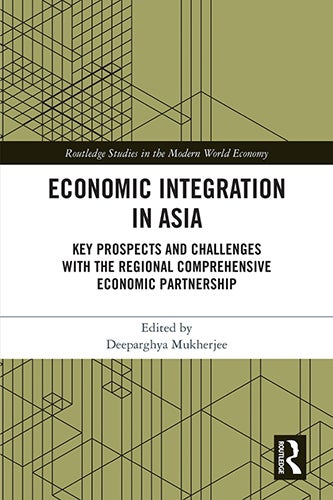
| Title: | Economic Integration in Asia: Key Prospects and Challenges with the Regional Comprehensive Economic Partnership |
| Author/s: | Deeparghya Mukherjee |
| Abstract: | The Regional Comprehensive Economic Partnership (RCEP) aims to achieve greater integration between the ASEAN region and its six free trade agreement (FTA) partners (India, China, Japan, Australia, New Zealand and Korea). The RCEP is the only agreement to include three economies which are among the seven biggest economies of the world—China, Japan and India. The book opens with an introduction to the current status of economic integration and factors that would affect it and looks at key issues like non-tariff barriers, evolving investment regulations in China (in the context of FTAs), connectivity initiatives to integrate the region, rules of origin in the context of value chain integration in selected sectors as well as region-specific aspects of South Asia and South East Asia which would shape the regional economic architecture going forward. With an attempt to cover key imperatives, the book concludes by noting primary impediments to easier trade and investment flows in the region, highlighting possible policy recommendations to improve economic integration. |
| Date: | 17 January 2019 |
| More From: |
Load more


